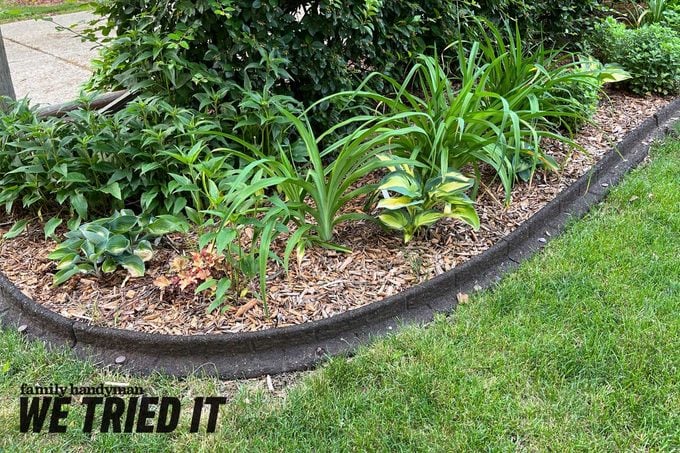Are you ready to elevate your garden game and create a stunning outdoor oasis? Whether you’re sprucing up a flower bed, lining a pathway, or defining your lawn’s borders, the right landscape edging can make all the difference. Enter rubber landscape edging—a versatile and eco-friendly solution that combines durability with style. But with so many options available, how do you choose the perfect fit for your project? In this blog post, we’ll guide you through everything you need to know about selecting the ideal rubber edging that complements your vision while enhancing functionality. Say goodbye to harsh lines and hello to seamless beauty as we explore tips, trends, and expert advice designed just for you! Let’s dig in!
Introduction to Curved Rubber Landscape Edging
When it comes to landscaping, every detail matters. You want your garden to not only look great but also function well. One element that often gets overlooked is the edging. Enter curved rubber landscape edging—a versatile and eco-friendly option that’s making waves in outdoor design. If you’re dreaming of clean lines and defined spaces without the hassle of traditional materials, you’re in for a treat! Rubber edging offers a functional yet stylish solution for separating your flower beds from grassy areas or defining pathways around your yard.
Imagine having an attractive border that can withstand the elements while enhancing the beauty of your garden. Whether you prefer sleek curves or straight edges, this material is perfect for achieving that polished look with ease. Ready to dive into everything you need to know about curved rubber landscape edging? Let’s explore how it can elevate your landscaping game!
Benefits of using Curved Rubber Landscape Edging
Curved rubber landscape edging offers a versatile solution for gardeners looking to enhance their outdoor spaces. One of the standout advantages is its flexibility, allowing you to create both straight lines and beautiful curves with ease.
This material is not just about aesthetics; it provides excellent durability as well. Rubber can withstand harsh weather conditions, resisting fading from UV rays and cracking from extreme temperatures.
Additionally, it serves an eco-friendly purpose. Made from recycled materials, rubber edging helps reduce waste while promoting sustainable landscaping practices.
Installation becomes hassle-free due to its lightweight nature. You won’t need heavy machinery or extensive tools—just a simple installation process that saves time.
Lastly, rubber landscape edging requires minimal maintenance compared to traditional borders. Say goodbye to constant repainting or repairs; this option remains intact for years with little effort on your part.
Comparison with Traditional Concrete Garden Borders
When comparing curved rubber landscape edging to traditional concrete garden borders, flexibility is a standout feature. Rubber edging can bend and curve seamlessly, allowing for creative designs that follow the natural contours of your garden.
Concrete borders often lack this adaptability. They require precise planning and installation. Once in place, they’re mostly fixed and unyielding.
Durability also plays a role. While concrete may chip or crack over time, rubber’s resilience helps it withstand extreme weather conditions without damage.
Installation is another consideration. Rubber edges are lightweight and easier to handle than heavy concrete slabs. This means quicker setups with less labor involved.
Aesthetic appeal should not be overlooked either. Rubber comes in various colors and textures, giving you options to complement your landscaping vision—something that plain concrete simply cannot offer.
Factors to consider when choosing the right Curved Rubber Landscape Edging for your project (cost, durability, aesthetics)
When selecting curved rubber landscape edging, cost is a primary consideration. Prices can vary widely based on quality and brand. Be sure to compare options that fit your budget while still providing the features you need.
Durability plays an essential role too. Rubber edging should withstand weather extremes without cracking or fading. Look for products backed by warranties to ensure longevity.
Aesthetics are equally important in your garden design. Choose colors and styles that complement your landscape’s theme. Curved designs can create gentle transitions between flower beds and lawns, adding visual appeal.
Consider how the edging will interact with existing elements in your yard, like pathways or trees. The right choice enhances both functionality and beauty within your outdoor space, creating a cohesive look you’ll love for years to come.
Different types of Curved Rubber Landscape Edging available in the market (curved, straight, interlocking)
When exploring rubber landscape edging, you’ll encounter various styles to suit your garden’s needs. Curved options are particularly popular for those looking to create flowing lines in their landscaping. They effortlessly follow the natural contours of your garden beds.
Straight rubber edging provides a clean and modern look. It’s perfect for defining straight lines along walkways or flower beds, adding structure without overwhelming your space.
Interlocking designs offer versatility and ease of installation. These pieces snap together seamlessly, allowing you to customize shapes and lengths based on your unique layout. This feature makes them ideal for DIY enthusiasts who enjoy flexibility in their projects.
Each type brings its own aesthetic appeal while ensuring functionality. Whether you’re aiming for elegance or practicality, there’s a rubber landscape edging option that fits perfectly into your vision.
Installation process and maintenance tips
Installing curved rubber landscape edging is a straightforward process. Start by marking the desired outline of your garden bed using stakes and string. This will guide you as you lay down the edging.
Next, prepare the soil along the marked line. Dig a shallow trench about 2 inches deep to create a stable base for the rubber edging. Place each piece into the trench, ensuring it fits snugly against previous sections.
For maintenance, check for any grass or weeds that may encroach on your edges. A simple trimming every few weeks keeps everything tidy. If you notice any sagging or separation between pieces over time, re-adjust them back into place to maintain that clean look.
Cleaning is easy too! Just rinse with water or use mild soap when needed to remove dirt and debris from your rubber landscape edging, keeping it looking fresh year-round.
Creative ideas for incorporating Rubber Landscape Edging in your garden design
Curved rubber landscape edging offers a versatile way to enhance your garden’s aesthetic. Consider using curved rubber landscape edging to create stunning, flowing lines that mimic the natural shapes of plants and pathways.
You can define planting beds with this material, allowing for sharp contrasts between greenery and walkways. It creates a sense of order without harshness.
Another idea is incorporating colored rubber edging for added visual interest. Shades of green or earthy tones blend seamlessly with nature, while brighter colors can energize otherwise subdued areas.
Think about combining different types. Use straight sections around flower beds and curved pieces along winding paths for an engaging layout.
Finally, use rubber edging in raised garden beds. It provides structure while softening the overall look, giving your garden both form and function.
Conclusion:
Curved rubber landscape edging is a smart and practical choice for any landscaping project. Not only does it provide a clean and polished appearance to your outdoor space, but it also offers a variety of benefits that make it stand out from traditional edging materials.
One of the main reasons why rubber landscape edging is a smart choice is its durability. The material used in these products is highly resistant to harsh weather conditions, such as extreme heat or cold, heavy rain, and strong winds. This means that your edging will not crack or warp over time like other materials, making it a long-term investment for your landscaping project.
Moreover, rubber landscape edging is incredibly flexible and easy to work with. It can be easily bent into various shapes and curves, allowing you to create unique designs for your garden beds or pathways. This flexibility also makes installation much easier compared to rigid materials like metal or concrete.
Another advantage of using rubber landscape edging is its low maintenance nature. Unlike wood or metal edging that requires regular staining or painting to prevent rotting or rusting, rubber edging does not require any upkeep. It also does not attract insects or pests like wooden borders do, saving you from potential headaches down the line.
Furthermore, rubber landscape edging is an eco-friendly option for your landscaping project. Many rubber border products are made from recycled materials such as old tires, which helps reduce waste in landfills and promotes sustainability. By using this type of edging, you are contributing to the conservation of natural resources without sacrificing quality.


